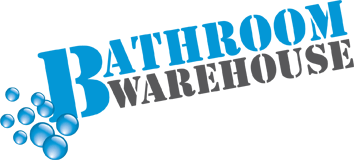 AUSTRALIA-WIDE DELIVERY 1300 788 653 MON-FRI 8.30AM TO 5PM SAT 9AM TO 3PM BETTER BATHROOMS. BETTER VALUE.
AUSTRALIA-WIDE DELIVERY 1300 788 653 MON-FRI 8.30AM TO 5PM SAT 9AM TO 3PM BETTER BATHROOMS. BETTER VALUE.Bathrooms Melbourne
Bathroom Warehouse has a major outlet in Melbourne. But we deliver Australia-wide to serve our customers in the most convenient way for them. Choose from bathroom vanity, bathroom accessories, toilets and cabinet products we have on stock and order now.
The residents of Melbourne are called Melburnians. Melbourne is the capital and most populous city in the state of Victoria, and the second most populous city in the whole Australia. The Melbourne City central (more popularly known as the "Central Business District"/"CBD"), is the rich hub of the greater geographical area (or "metropolitan area") and the Census statistical division—of which "Melbourne" is the common name. As of June 2009, the greater geographical area of Melbourne had an approximate population of 4 million.
Economic Growth
The economic growth of the Victorian gold rush peaked during the years of 1880s and Melbourne had become the richest city in the world and also the largest city after London in the known British Empire. Melbourne City have hosted five international exhibitions at the large purpose-built Exhibition Building between 1880 and 1890 causing the construction of several prestigious high class hotels, Federal and the Grand (Windsor). In 1885 visit, English explorer George Augustus Henry Sala coined the catchphrase "Marvellous Melbourne", which stuck long into the twentieth century and is still used today by Melburnians. The increasing building activity culminated in a "land boom" which, in 1888, reached a peak of speculative development fuelled by consumer confidence and escalating land cost.Consequentlym the boom, large commercial buildings, terrace housing, coffee palaces and palatial mansions proliferated in the city. The establishment of a hydraulic service facility in 1887 allowed for the local manufacture of elevators which, in turn resulted in the first construction of high-rise buildings. This period also saw the growth of a major radial rail-based transport network in Victoria. Modern Melbourne Since year 1997, Melbourne has maintained a very notable population and employment growth. There has always been notable international investment in the city's real property markets.
The major inner-city urban renewal has occurred in areas such as Southbank, Melbourne Docklands, Port Melbourne, and heaps more, the South Wharf. According to the Australian Bureau of Statistics, Melbourne has maintained the highest population increase and economic growth rate of any Australian capital city in the three years ended June 2004.These statistics have led to population growth and further suburban expansion through the 2000s. In 2008, Melbourne was named as a UNESCO City of Literature. In 2006, the growth of the city extended into "green wedges" and mroe of tthe city's Urban growth boundary. Speculations of the city's population reaching 5 million people pushed the state government to review the growth boundary in 2008 as part of its Melbourne. Melbourne has survived the financial crisis of years 2007-2010 better than any other cities in Australia. In year 2009, more jobs and epmloyemnt were created in Melbourne than any other Australian capital city - almost as many as the next 2 fastest growing cities, Brisbane and Perth, combined. Afterwards, Melbourne's property market remained strong, thus consequently in historically high property prices and widespread rent cost increases.
Natural Wonders
Melbourne is often surprised at the vast tracts of greenery surrounding the central business district. To a large degree, the heart of the city is enclosed by parklands and gardens. Even melbourne's streets take on a green note, as its main boulevards and many of its streets are lined with trees, in particular london plane trees. It is a little known fact that melbourne* has more than 18,000 street trees (as distinct from 20,000 park trees) with an estimated value of more than $350 million. These trees are now managed by the city of manager, with a. Tree database. Gardens and parklands close to the cbd include:. Royal botanic gardens.